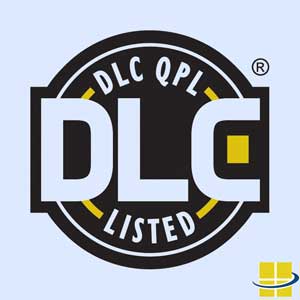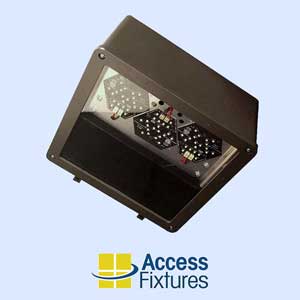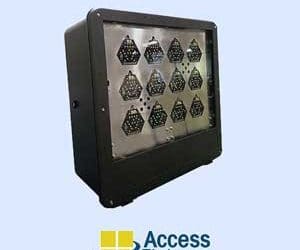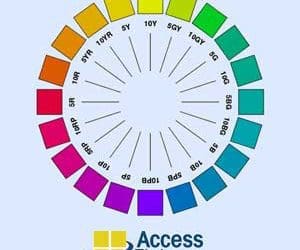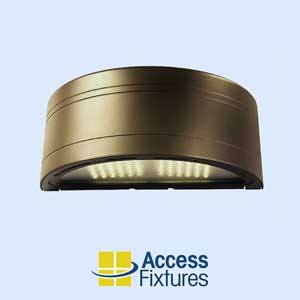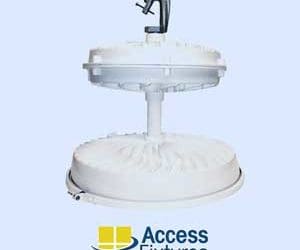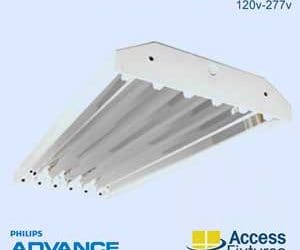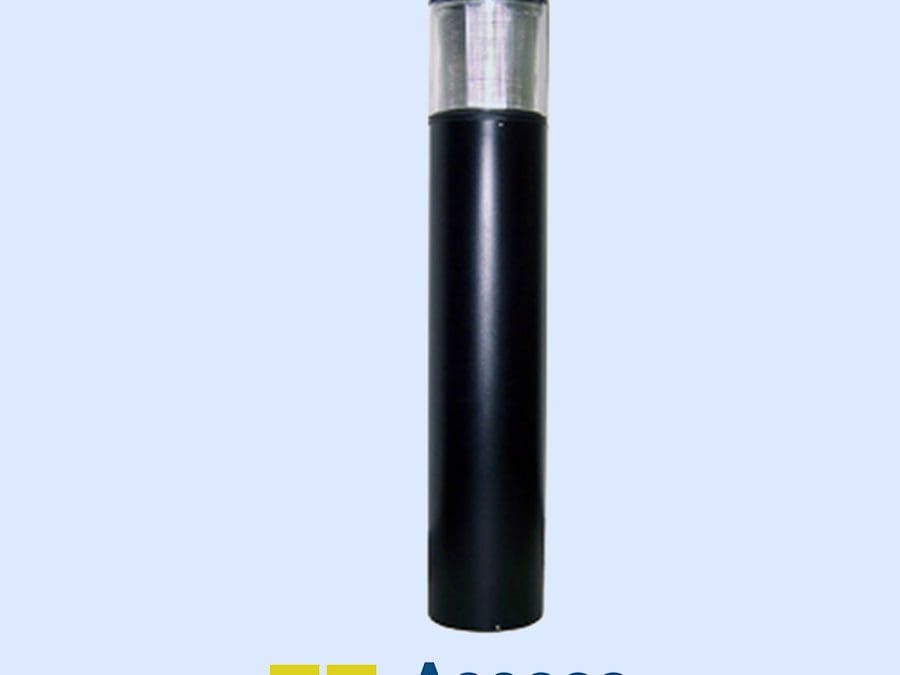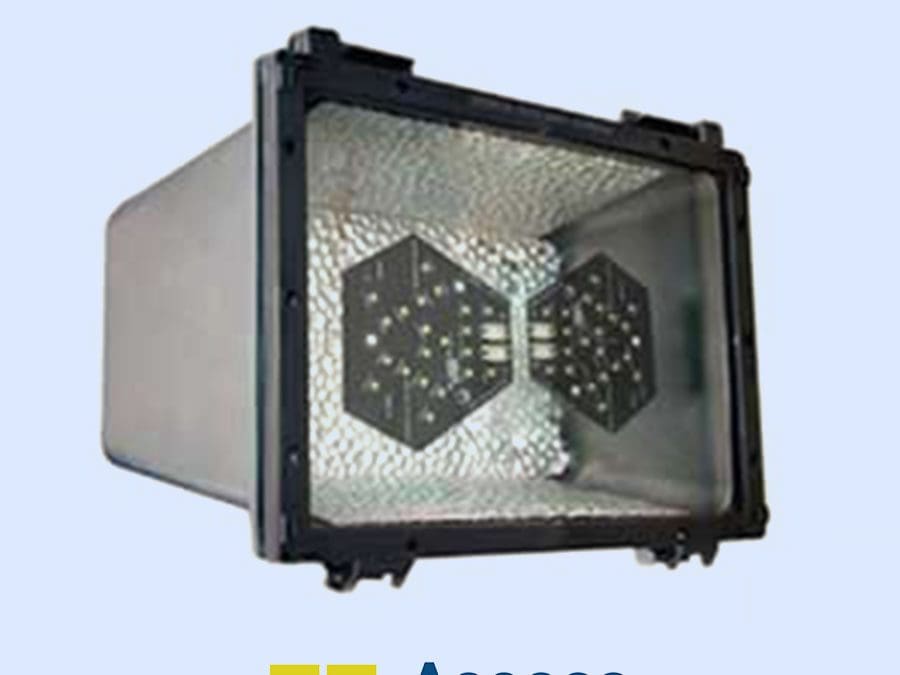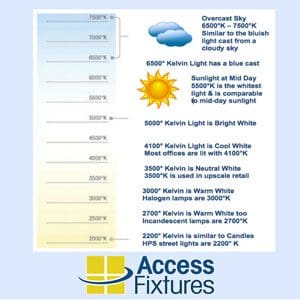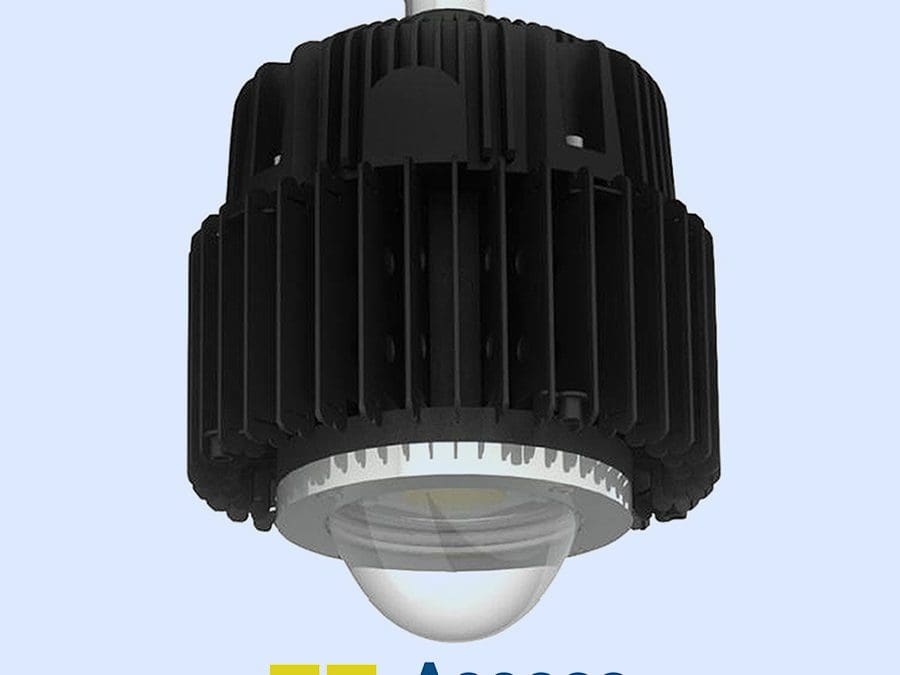The DesignLights Consortium (DLC) is a nonprofit, voluntary organization made up of energy-efficient groups and utility companies located across the United States and Canada. A product with a DLC listing is considered to be of high-quality technology that complies with a minimum performance standard of LED/SSL commercial lighting not included in the ENERGY STAR program. The DLC collaborates with energy-efficiency program members, manufacturers, and lighting designers from across the country to examine and promote energy-efficient, high-quality lighting.
What Is a DLC Listing?
If you are in the market to purchase lighting fixtures, you’ve probably come across at least a few DLC labels. It looks official, sure, but what does it mean, and should you only buy fixtures that come with this certification?
The main aim of the DLC is to analyze and verify advancements in technology to certify and promote high-performing, energy-efficient, LED lighting. The DLC enlists technical expertise through collaborative methods of testing, evaluation, and driving positive performance in the industry. Products that are tested and given the DLC blessing are added to the Qualified Products List (QPL), where they join other commercial LED fixtures, linear lamps, and retrofit kits of the same ranking. For a product to successfully attain the DLC listing, it is put through intense third-party testing to prove it performs as described by the manufacturer. DLC listing means that it has been fully tested and approved as a high-quality, energy-efficient product.
Always working to push boundaries to create more adaptable, energy-efficient products in the ever-changing industry, the DLC approves only the best products available. Furthermore, the DLC regularly creates new tools, technologies, and resources relevant to manufacturers and users to ensure thorough and up-to-date testing is carried out.
In addition, a DLC label will only appear on commercial products, never consumer-grade products. Standard procedures and guidelines are common in most industries, and the lighting industry is no different. DLC certification allows customers to make informed decisions when selecting their light fixtures and offers them a guarantee that their purchase meets expectations.
Why Do You Want a DLC-Listed LED Luminaire?
DLC labels provide a level of certainty for customers, electricians, and distributors. Due to the DLC’s strict standards and guidelines, buyers can rest assured knowing they’ve chosen a fixture that has been properly tested and produced with high-quality materials. This takes a lot of the guesswork out of the light-purchasing equation and can help narrow the field of reliable options.
Another huge reason to look for the DLC label is simple: Rebates. In recent years, DLC listing has become increasingly popular due to the growth of the industry, with LED being a particular focus and growth area. Almost all DLC-listed products are eligible for utility rebates. These fixtures offer immediate energy savings and performance with the bonus of potential rebates.
DLC certifications quantify and qualify the performance of LED fixtures and do not certify any other lamp types. Among other things, the tests measure expected lifetime, efficacy, and light output.
Why You May Not Want a DLC Luminaire
So you’ve been researching fixtures for your lighting project and have just found the perfect fixture, only to realize it is not DLC listed. You should move on and find one that is listed, right? Wrong! Fixtures that do not have DLC listings may still be viable, high-performance, energy-efficient options.
There are many factors involved in getting a product DLC listed, but not every lighting fixture gets tested; even fixtures that would qualify for a listing do not make it to the QPL.
Why Do Some LED Luminaires Not Have a DLC Listing?
Believe it or not, there are many excellent reasons for an LED luminaire not to have a DLC listing. For example:
- It may be a new technology that does not fit existing DLC listing requirements.
- It may not have been submitted for testing.
- The LED fixture is not in a category that has DLC listings.
- The LED fixture was designed to meet other specifications, including:
- LED high bay luminaires are designed for high-temperature environments.
- Turtle-friendly applications.
- Wildlife-friendly applications.
- DLC listings are expensive ($5,000–$30,000 per system listing) and do not have a value for some applications, including:
- LED fixtures with specialty designs like no-UV or the restriction of light to specific nanometer ranges.
- Explosion-proof LED luminaires.
Does a DLC Listing Guarantee a Rebate?
DLC listings provide the potential for rebates, but rebate programs can be tricky. For instance, while there are numerous instant rebate programs out there, not all utility companies will accept your fixture. There are limitations to product types that certain rebate companies accept, as each company may have a specific, reserved list of fixtures for which they offer rebates. Rebate programs have limited funding and, when funding runs out, the programs stop paying rebates. Additionally, there is often a short time frame in which you can claim your rebate after installing your fixtures.
Custom-lighting rebate programs offer more flexibility, but the application process is more tedious than others; these fixtures typically require multiple inspections. These processes can significantly delay the rebate process and many see them as being more hassle than they are worth.
Are Rebate Programs Worth Participating In?
Yes and no. If the product is DLC listed and all aspects of the rebate program are clear and work as advertised, yes, but that doesn’t always happen. Keep in mind, too, that DLC-listed fixtures are also listed at premium prices that may be difficult to justify.
Many LED lighting manufacturers will have multiple versions of the same fixture. While the differences between the fixtures may be slight at best (e.g., a different Kelvin temperature, CRI rating, etc.), the non-DLC listed model often sells for less, simply because it lacks that expensive logo. The price difference may be intended to offset the cost of listing that product on the QPL and may be a deal-breaker for electricians or end-users.
Does a DLC Listing Ensure a Quality Product?
As previously discussed, a product that has been DLC-listed has gone through thorough testing to ensure both quality and efficiency. This typically makes an end-user’s purchasing decision a lot easier because there is an automatic guarantee that he or she will be getting a good product.
The DLC requires that product testing must be carried out in an approved laboratory before an evaluation will be given. The tests carried out include performance and energy-efficiency testing, all of which must adhere to strict rules and guidelines. These tests, per the DLC, include:
- In-situ Temperature Measurement Tests (ISTMT)
- IES-LM-79-08 – Electrical and Photometric Measurements of Solid-State Lighting Products
- IES-LM-80-08 – Measuring Lumen Maintenance of LED Light Sources
- IES-LM-84-14 – Measuring Luminous Flux and Color Maintenance of LED Lamps, Light Engines, and Luminaires.
- Compatibility testing for four pin-base replacement lamps for CFLs.
All these tests considered, products without a DLC listing can still guarantee a quality, high-performing, energy-efficient product. To find out what fixture will best suit your project, speak to an Access Fixtures lighting specialist today.
Do T5 Light Fixtures Have DLC Listings?
T5 light fixtures do not have DLC certifications. T5s use fluorescent lamps, which means they do not qualify for DLC certification. With the increasing demand for energy savings in recent years, fluorescent bulbs have been brought to the forefront of the market, right alongside LEDs.
Fluorescent fixtures use a fraction of the power of old probe-start metal halides. In most cases, switching to fluorescent offers a significant reduction in energy expenses, resulting in savings of thousands of dollars per year. Additionally, there is a wide range of rebates available for fluorescent fixtures, as well. Therefore, choosing a T5 fixture does not necessarily mean you’re missing out on the party. T5 fluorescent fixtures, such as Access Fixtures 1-lamp, 2-lamp, 4-lamp, and 6-lamp fluorescent fixtures, will save you money and still make you eligible for rebates.
Getting Rebates for DLC-Qualified Luminaires
Now that you’re already familiar with the DLC listing process, you’re probably ready to select fixtures and are already thinking about rebates.
There are many different rebate programs to choose from. Contacting your local utility company is the best way to find out what best suits your project and situation. Alternatively, entering your zip code on the Database of State Incentives for Renewables & Efficiency website can help find policy and incentive programs near you.
Access Fixtures DLC-Listed Fixtures
Access Fixtures offer a wide range of DLC-listed fixtures, such as such as the STAT LED flood lights. These fixtures include the 104w LED flood light, the 221w LED shoebox flood light, and the 407w LED shoebox. Other DLC-listed products include the HEZE Full Cutoff 50w LED wall pack, EMBU 179w LED high bay, and the CANO vandal-resistant LED garage canopy light. For more information on other DLC-listed fixtures, speak to one of our lighting specialists today!
Access Fixtures Lighting Specialists Can Make This Simple
Access Fixtures is your factory-direct source for high-quality lighting, including T5, PSMH, and LED industrial and warehouse lighting. For help finding the best solution for your application, or for information on LED fixture rebates in your city, visit DSIRE or contact Access Fixtures by requesting a call from a lighting specialist. You can also call us directly at 800-468-9925.

